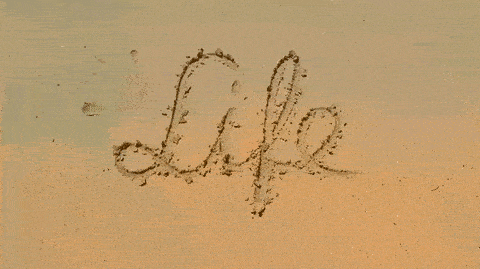Do you have big goals in life? Do you have life goals? Yes? That’s great. Otherwise, you are not alone. Not too many people know exactly what their life goals are. If you are one of them, no problem just continue reading.
What Is a Big Goal or a Life Goal
Let’s start what a big goal is not. It is not just a task. It is not something you think you can achieve easily. And, it is not something you expect to happen next week.
Your life goal is something beyond your next paycheck or your usual annual vacation.
So, what is a big goal or a life goal? First of all, it is YOUR goal. It is not the goal of someone else or the goal you would like to achieve to impress someone else. Your goal is aligned with your values. Usually, it is a bit scary and you don’t know immediately how to achieve it. There is no book or master plan on how to achieve your specific live goal as a whole. This is because nobody before you has ever achieved your life goal. It is your life. It is your life goal.
These big goals or life goals are sometimes called BHAG’s (Big Hairy Audacious Goals). Sounds scary indeed, right? Don’t worry. There are strategies that can help you.
Why Should You Have Big Goals or Life Goals?
There are plenty of good reasons why to have goals, big goals and life goals. Here are our top five:
- Big goals helps you to take control of your life
- It provides clarity and helps you with decisions and with prioritizing daily tasks
- It works as a tool to actually achieve and create something
- Big goals provide a sense of purpose and it is motivating in itself
- It helps to be happier and thus it can have a positive impact on your health
Life goals work like a compass. They help to guide you. And, they also help you to lead a happy, purposeful life, to create your heritage and to have no regrets at the end.

How Can You Find My Big Goals or Life Goals?
How can you find out what is really important for you? How can you find your life goals?
First of all, the quest for your life goals is a process. It is hard to find out overnight. Sometimes it takes years to find out what really matters to you. And, life goals can even change over time. That’s normal and perfectly fine.
Where to start? There are some helpful exercises to find out more about what your big goals or life goals might or might not be.
The following steps are taken from our free goal-setting eBook:
- Make a List
Make a list of all the things you want. Take a sheet of paper and write down everything that comes to mind. Think as if you were a child again. What are your dreams? It does not matter whether this seems possible or not. Do this for ten minutes.
- Categorize
Now you can order your list and put the items into certain categories, for example health, family, career, and so on. Do this for five minutes.
- Prioritize
Then, prioritize your lists. Move the most important items, the things you want most, to the top. Keep in mind why you would like to achieve this goal. Do this for another five minutes.
- Select
Your lists contain your top goals in the top now and you can select the ones you would like to officially take as your goals. Please note that you do not select more than five to seven items. If you were only allowed to select five goals, which ones would that be? Try to mix the categories, that means do not take five career goals only. Also, check if your selected goals align with your overall values and with your life goals.
- Deadlines
You also might want to put this into time frames. That means, until when would you like to achieve this. Possible categories are one month, six month, one year, two years, five years and 20 years. For big goals or life goals it usually takes more than two years.
- Ready
Do not spend more than one hour for the whole process. You now have your top five goals.
Try this exercise and you will learn more about what is important for you, what you want and what you don’t want. And maybe you already get an idea about your life goals. You can repeat this exercise several times over the next few weeks.
Your Goal Statement
Now you can (and should) write down your goal statement(s). People are more likely to achieve their goals when they have written them down.
Your goal statement should be short, not more than five sentences. You also might want your goal statement to be SMART (Specific, Measurable, Action-oriented, Realistic, Time-bound).
After you have your goal statements ready you can continue with the planning phase.
Your Mindset
The “R” in SMART stands for Realistic. It is important that your goal is realistic. But, maybe even more important is that you believe it is realistic. Or, in other words you must believe you can achieve your goal.
Do you remember our BHAG’s above? These big goals are scary. That’s why they are big goals. In order to make them less scary you can divide your big goals into smaller chunks or sub-goals with milestones and you can then divide these sub-goals into actionable tasks. You do this in your planning phase.
Also, be aware of negative assumptions and listen carefully to your inner voice. You can achieve more than you might think you can.
Imagine Your Story
Pursuing your life goal is a journey and pursuing might be even more important than actually achieving your goal. Your life is a story and you are the writer. Make it a hero story. Make yourself the hero in that story.
Imagine yourself as the hero in your story. Imagine all the necessary steps, changes and habits. Then, go ahead and revise your goal statement if and whenever needed.
Do You Need Help?
Would you like to learn more? In our free VidaGoals eBook (PDF and ePub) you can find information, tips and tricks all about goal setting. And our free VidaGoals android app can help you with finding, planning and reviewing your goals on the go.
